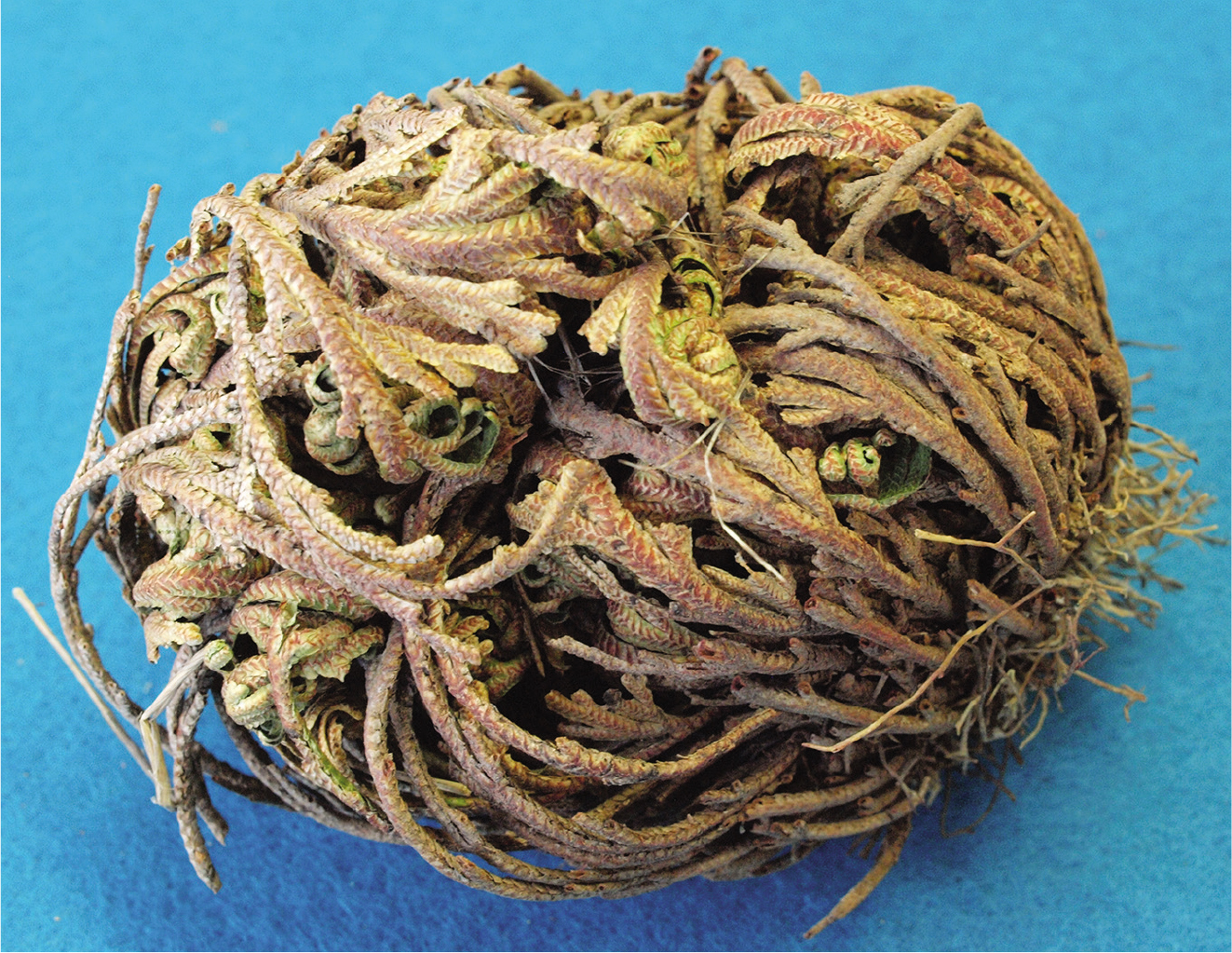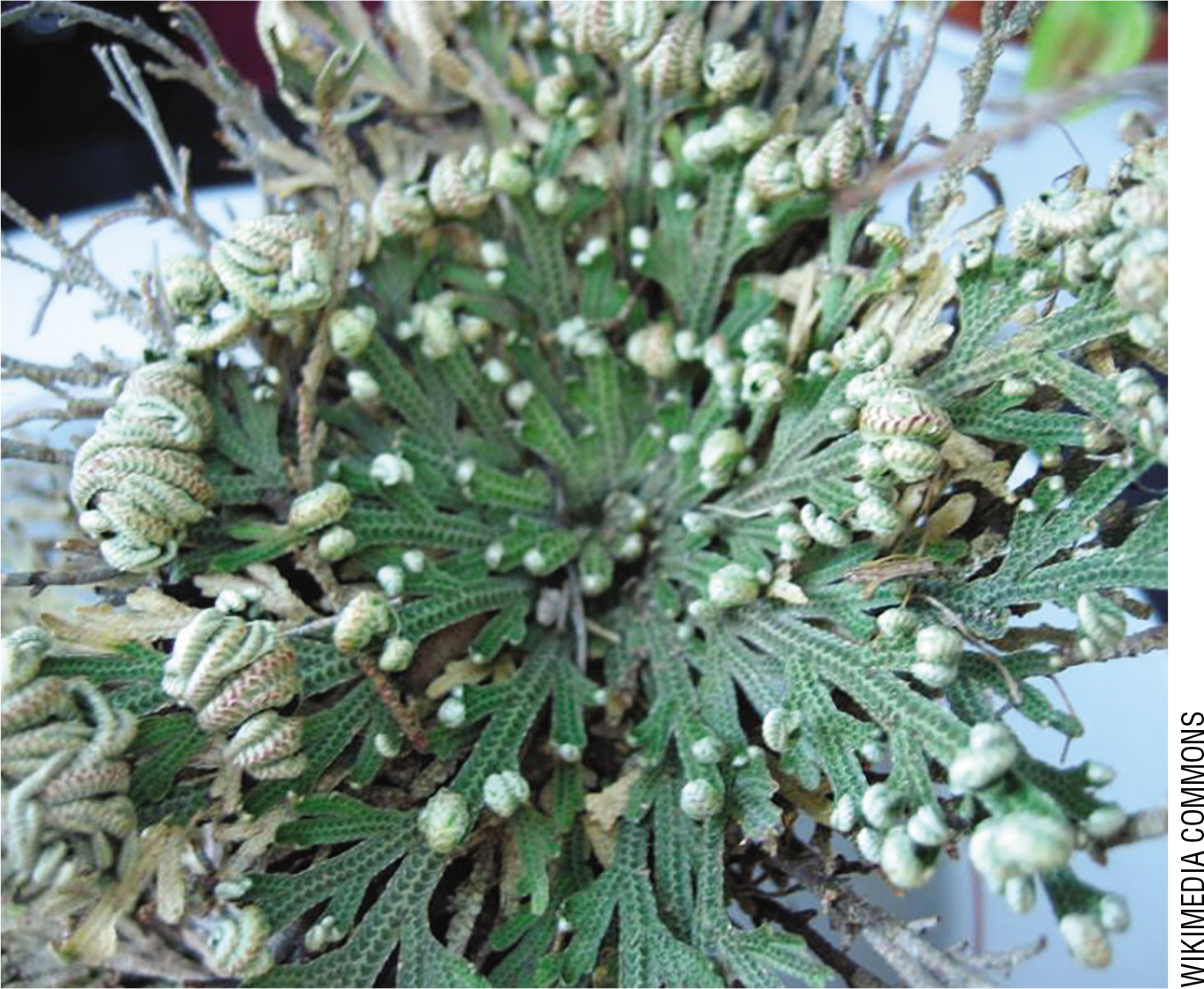Disequilibrium
Investigating the Resurrection Plant
Investigating the Resurrection Plant
By Todd Hoover
Using discrepant events to confront misconceptions.
The Chihuahuan Desert, which spans the borders of Mexico, Texas, and New Mexico, is home to a native plant that has evolved to survive and reproduce in this arid, parched environment. To many, at first glance, the Selaginella lepidophylla, or “resurrection plant,” appears to be a dried up ball of dead plant matter. However, the plant actually follows a cycle where it remains in a dormant state until it accumulates enough moisture to rejuvenate and reproduce, and then it returns to a dormant state as weather conditions become dry and inhospitable. This process has enabled the plant’s population to thrive for millions of years.
Resurrection plants can be purchased for about $10 in brick-and-mortar stores and online through various retailers. At the end of your lesson, you can allow the plants to dry out and then store them for use with future classes.
Engage
Without telling students its name or that it is dormant, show the class a dormant resurrection plant (Figure 1), mixed with some familiar plants that are dried up or dead, such as cut roses, carnations, or hydrangea blooms. Ask students to list some of the characteristics of the plants. Most notably, students should mention that the plants appear very dry.

Based upon their previous experience, ask students if they believe the plants are still alive, or if they have died. Some students may respond that all of the plants are dead. Others might mention that it is obvious that some of the plants have been cut from the main plant, and if they have been that way for a while, they are likely dead. This is an excellent time to discuss the characteristics of living things—such as the ability to respond to the environment, grow, reproduce, and use energy, and that they are made up of cells—and to determine if they seem to apply to any of the specimens.
Students will probably be unfamiliar with the resurrection plant, so they may not know whether it is an individual plant or part of a larger plant. Some students may be aware of your wily ways, and will guess that at least one of the plants (probably the one they are least familiar with!) is still alive. Regardless of their observations, at this point, do not reveal any secrets about the resurrection plant, but simply tell students that they will investigate the plants during this activity. Ask students to include a drawing or photo of each plant in their science journals.
Explore
Materials:
(Note: Select the number of materials based on whether you want to present a demonstration, or have groups or individual students carry out the activity.)
- resurrection plant(s)
- variety of dried cut flowers (such as roses, carnations, hydrangeas)
- tap water
- bowls and vases
It is best to carry out this activity first thing in the morning if you are in a setting where students can return to check progress later in the day. If possible, set up a livestream camera and share the link with students so that they can check the plants at any time over the next 24 hours.
Within the camera’s field of view, place each of the plants in a separate bowl or vase of water. Ask students to check on the plants over the next 24 hours and note any changes that occur. Students should observe that the resurrection plant begins to unfold (Figure 2). They may even notice some green within the plant’s leaves (although this may depend upon how recently the plant was in a state of active growth.)

Explain
The following day, discuss students’ observations. Ask them to add a second drawing or photo of the plants to their science notebooks that they can compare to the first. Changes in the plants should be recorded in the notebooks. Student products should observe that the resurrection plant has changed the most and has unfolded. Sometimes, there may also be some greenery that becomes visible. This is more likely if the plant has been out of its dormant state for a long period of time.
This is a good time to have a classroom discussion about the resurrection plant. Discuss with students the area of the United States where the plant is native. Ask them to describe (and if they don’t know, research) the climate of this region—particularly, the average rainfall. Students will discover that the Chihuahuan Desert is a mostly arid environment with over 8 in. (221 mm) of rain each year.
Have students read “The Incredible Feat of a Resurrection Plant” (see Resources). In this short article, students will learn how this plant (that resembles a tumbleweed as it rolls across the desert), does not store water in its leaves like some plants (for example, many cacti), but rather enters a state of dormancy to survive the long, dry periods. The article also briefly describes how scientists believe the cell structure of these plants allows its cells to bend and twist and adapt in a way that allows the plant to live. Also, rolling into a tight ball protects the plant from what would otherwise be deadly UV rays from the Sun. Scientists are also still studying the chemical makeup of the plants, trying to determine if their hypothesis that the types of sugars and enzymes the plant contains are a significant factor for its survival in this harsh climate.
Finally, have students watch the fascinating time-lapsed video of a resurrection plant going from dormant to active state, titled “In Motion Workshop: Rose of Jericho” (see Resources).
Elaborate
Scientists continue to study what makes a plant remain viable for extended periods of time. For example, archeologists unearthed 200-year-old seeds from a date palm plant in the ancient Israeli fortress of Masada. In 2005, scientists regenerated the seeds in a lab to sprout a date palm tree they named Methuselah. It flowered in 2011, and by 2015, the date palm grew to over 3 m (10 ft.) tall. Researchers had learned that it was a male plant, so it would not produce fruit. However, they were able to use the pollen from Methuselah to successfully pollinate a modern-day specimen of a female date palm that did produce fruit. For more details on Methuselah, see both the National Geographic and the webpages listed in the Resources section.
In addition, scientists have regenerated seeds that were over 30,000 years older than Methuselah! Some mature and immature seeds were found 38 m (124 ft.) deep in the ice of Siberia. The flowering plant Silene stenophylla is native to Siberia and produced seeds that are believed to have been buried by an Ice Age squirrel. Scientists were able to extract tissue from the seeds, place them in vials, and successfully germinate plants that grew, flowered, and produced their own seeds. More information about this plant can be found on National Geographic’s website (see Resources).
Evaluate
Provide students with the option of two assessments. In the first assessment, students research what types of plants can survive in the most extreme conditions. Then, students select a favorite, tell why it is their favorite, and describe what variations of traits enable it to survive in an extreme condition. Alternatively, students create a customer support YouTube video for a garden supply company. In their brief tutorial video, students should explain the proper care of a traditional houseplant versus a cactus. Specifically, they should include a description of the variations of traits that cause the plant to be cared for in the manner they describe.


